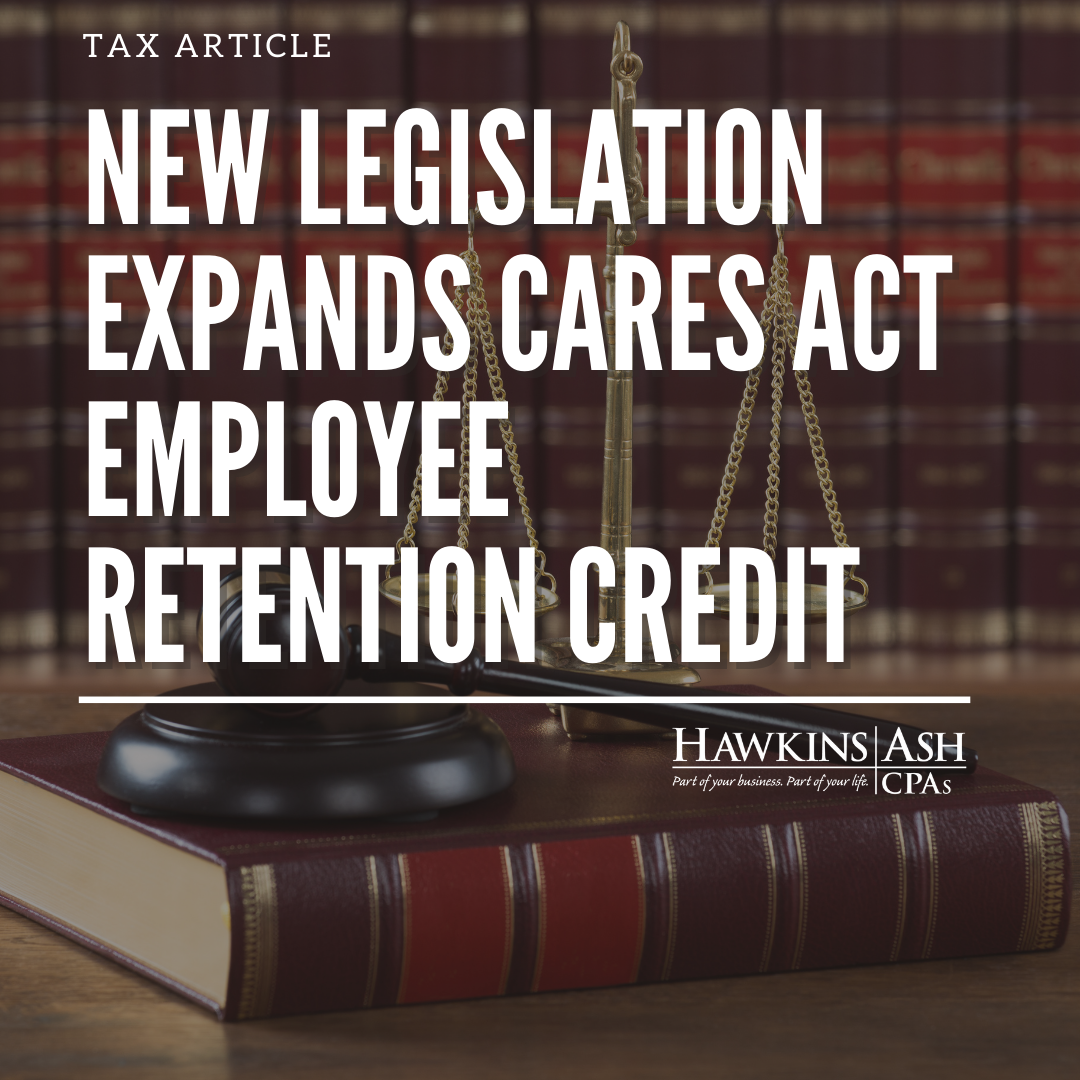The Consolidated Appropriations Act (CAA) of 2021 signed into law on December 27, 2020, provides new relief to businesses and others impacted by COVID-19. Changes made to the Employee Retention Credit (ERC) provides a key opportunity for businesses. The new law makes retroactive changes to the 2020 credit and creates new opportunities for 2021. This article summarizes the key provisions and qualifications for this credit.
The ERC is claimed against payroll taxes on the Form 941 and is refundable – meaning it can create a refund beyond the taxes a company would normally owe.
ERC for 2020 (CARES Act)
- Allows qualified employers to claim a credit of up to 50 percent on employee qualified wages paid from 3/13/20 through 12/31/20. Wages include the employer portion of health care costs.
- Maximum wages eligible per employee is $10,000/year (max $5,000 credit per employee for 2020).
- Criteria to qualify:
- New from the CAA–PPP loan borrowers can now claim the ERC, however, the same wages cannot be used for both PPP forgiveness and the ERC. The same ERC wages also cannot be used for other tax credits, such as Research and Development (R&D) credit and Work Opportunity Tax Credit (WOTC). If you think you may qualify, ensure you consider this before applying for PPP forgiveness.
- The employer carried on a trade or business during calendar year 2020; and
- The operation of that trade or business was fully or partially suspended due to orders from an appropriate governmental authority due to COVID-19; or
- The trade or business had gross receipts for at least one calendar quarter in 2020 that were less than 50 percent of the gross receipts received during the same calendar quarter(s) in 2019. The period of decline in gross receipts is recognized until the end of the calendar quarter in which gross receipts were greater than 80 percent of gross receipts of the corresponding calendar quarter in 2019. Therefore, at least two quarters of wages would be able to be claimed for the ERC.
- For employers with over 100 full-time employees, the ERC is available only on wages paid to employees for not working. For employers with 100 or fewer full-time employees, the ERC is available on all employee wages. This threshold is based on the average number of employees in 2019.
ERC for 2021 (Changes included in CAA)
- Increased the ERC to 70 percent (up from 50 percent) on wages paid.
- Increased maximum wages eligible per employee to $10,000/quarter (from $10,000/year) for a max of $7,000 per employee per quarter for two quarters.
- Increased the 100 full-time employee threshold to 500 full-time employees.
- Reduced the quarter over quarter gross receipts decline to 20 percent (down from 50 percent) of the gross receipts received during the same calendar quarter(s), comparing the 2021 calendar quarter to the same quarter from 2019. Employers that did not exist in 2019 can use the corresponding quarter in 2020 to measure the decline in gross receipts.
- The same rules apply on ERC wages not being eligible for PPP loan forgiveness and other tax credits.
There are parts of the Act that need further guidance due to unclear language, as is the case with most new legislation, including how to retroactively claim these credits and the interplay with already forgiven PPP loans.
Please contact your local tax professionals at Hawkins Ash CPAs if you need assistance or would like more information on how the Employee Retention Credit can benefit your business.
Contact Us




